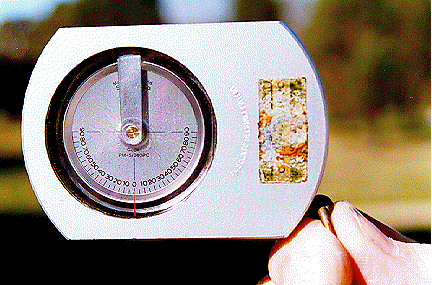|
|

The Suunto Clinometer is a height measuring instrument of small size and light weight. It is robust and inexpensive. The Suunto has a peep-hole at the rear but none at the front. A weighted wheel within the Suunto rotates. When looking through the peephole, a circular field of view of the scales and a horizontal line is seen. Scale readings are taken from the line.
When used correctly, the Suunto Clinometer has an accuracy of about +/- 0.5 m for a 20 m tall tree (ie about 2.5%).
|








